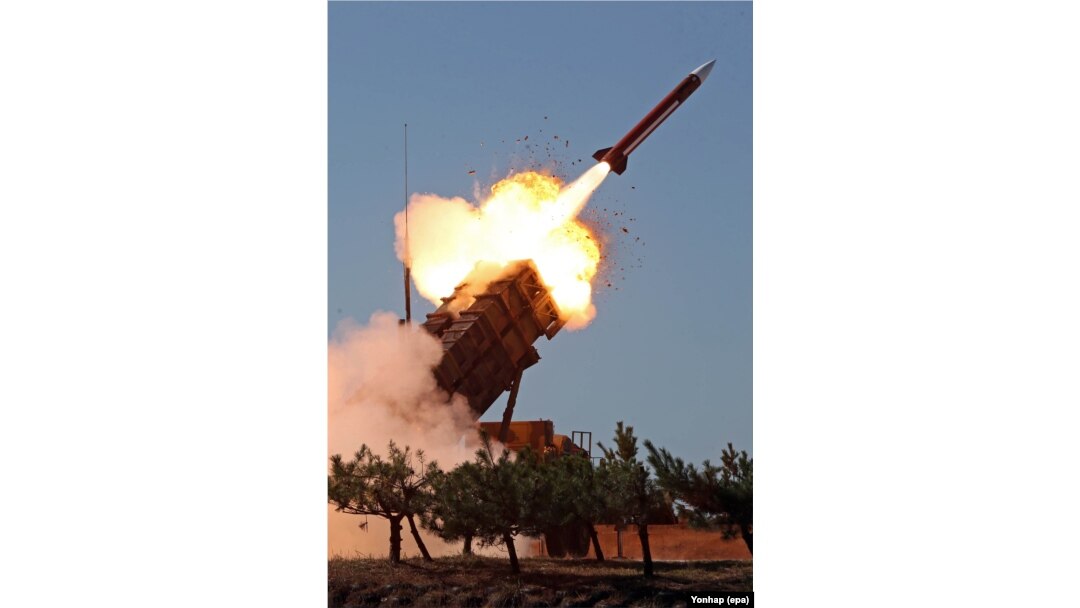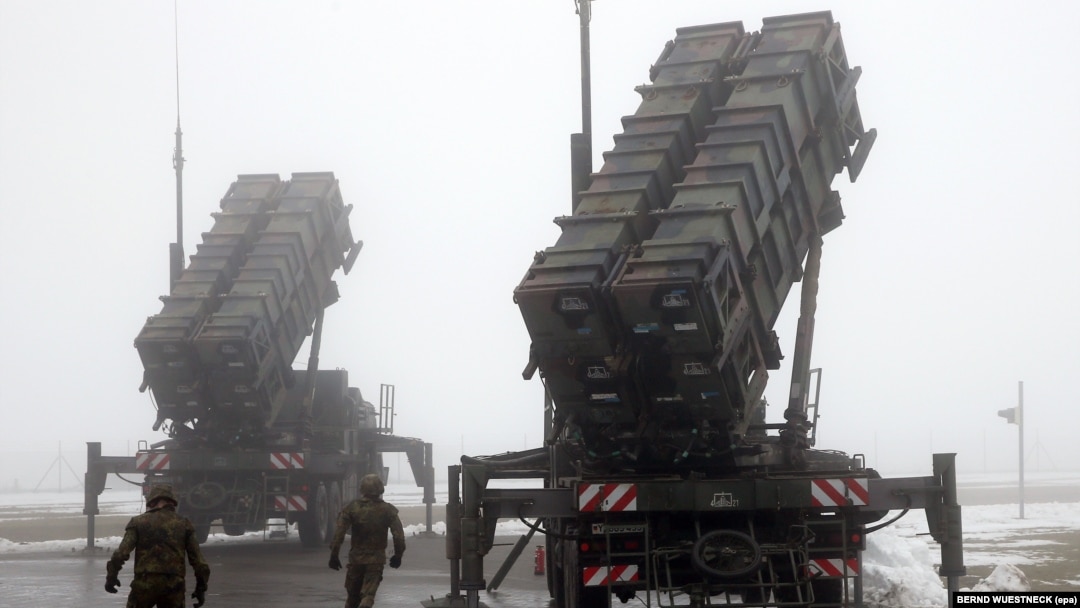Washington will supply an expensive, highly advanced Patriot missile battery to Ukraine, but experts say the defensive weapon may not be the game changer many are hoping for.

A missile being fired from a Patriot launching station in South Korea in October 2015.
During his visit to Washington on December 21, Ukrainian President Volodymyr Zelenskiy singled out the inclusion of a Patriot missile system announced in a massive new military aid package. The weapon, he said, was "the strongest element" of the $1.8 billion tranche and would stop attacks on his country's critical infrastructure.

A Patriot missile impacting a dummy target during a test in the U.S. in 2000.
The Patriot missile system was first developed in the 1960s under the acronym SAM-D, and was initially designed as an antiaircraft weapon.
By the 1980s the Patriot was redesigned to target incoming enemy missiles. Today, the latest iterations of the antimissile system can track incoming targets from up to 100 kilometers away and destroy them within 40 kilometers from the launcher. The latest Patriot missiles employ high-precision "hit-to-kill" targeting in which the missile explodes on impact, rather than in the vicinity of an enemy projectile.
A German soldier operates a radar antenna from the Patriot system.
A Patriot battery consists of an entire convoy that includes radar and control-station vehicles as well as a "power plant" truck fitted with generators, and the missile launch stations. Around 90 people are required to operate a battery but once set up, a Patriot system can function with a skeleton crew of three people.
A Greek Air Force officer operates the radar of a Patriot system near Athens in 2004.
The weapon has been touted as the "gold standard" for air defense, but previous iterations of the Patriot have suffered catastrophic failures in combat.
In 2018, Patriots were filmed misfiring amid a Huthi rebel missile attack on Riyadh, Saudi Arabia. One of those Patriot missiles curled off-target and slammed into a civilian area seconds after launch. In 1991, during the Gulf War, a software glitch led to a Patriot missile battery failing to spot an Iraqi Scud missile streaking toward a U.S. military base, also in Saudi Arabia. Twenty-eight U.S. soldiers were killed by the incoming Scud.
A U.S soldier inspects a Patriot missile launcher near Warsaw in 2015.
Ukraine has long called for the supply of Patriots to bolster a sometimes-overwhelmed array of antimissile defenses that have included Soviet-designed systems, as well as old U.S. HAWK air-defense missiles.
But some experts say the real-world impact of the Patriot system will be limited due to the relatively small protective "dome" it provides, and its high cost of around $4 million per missile. Iranian-made "suicide drones" that Russia has launched at Ukrainian cities are estimated to cost as little as $20,000-$50,000 each.
A dummy Patriot PAC-3 missile is displayed at a Japanese air base in 2019.
A military official familiar with the Patriot system told Time that one battery could protect a single facility like a military base, or a suburb of a city, but not a whole metropolis like Kyiv. The unnamed official said that a single Patriot battery "would not change the course of the war."
Another expert told CNN the system could be used selectively to go after powerful Russian weapons -- such as Kalibr cruise missiles -- thus freeing up other, less-expensive air defenses to target smaller attack drones.
U.S. soldiers stand next to a radar component of a Patriot missile battery in Israel in 2012.
It is unknown when the Patriot battery will be deployed to Ukraine. Operators will reportedly be trained for use of the weapon in Germany, a process that usually takes "months."
The Kremlin reacted to earlier reports the weapon would be provided to Ukraine by saying the Patriot system would be a "definite" target for Russia once set up inside Ukraine.


